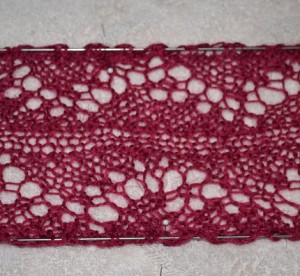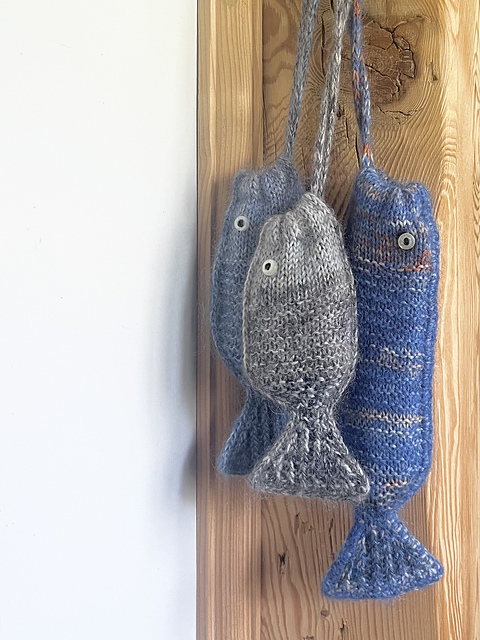 Yesterday we talked in general about how and why to block knitting projects, but there’s one case in which blocking is not optional, and that’s with lace knitting.
Yesterday we talked in general about how and why to block knitting projects, but there’s one case in which blocking is not optional, and that’s with lace knitting.
If you’ve knit lace before you may remember your first lace project and how it looked rather like wadded up tissue paper when you were done knitting it.
Lace straight off the needles is rarely pretty. But there’s an easy cure: blocking.
In this case, I would wet block unless your project is too fragile for that. A blocking board is great because you’re going to need lots and lots of pins. (Or blocking wires; they’re totally worth it if you knit a lot of lace.)
As you pin down the project you really need to stretch and straighten it to get those eyelets opened. This is what makes all your hard work visible, so don’t skimp. Take your time and try to enjoy it as the last step you have to do before you get to enjoy your beautiful new lace thing.
And if you want to see the real magic that blocking lace can do, check out this tutorial on blocking a circular lace shawl. The blocking itself is a labor of love, but it’s absolutely crucial to have a project you’ll be happy with.
Any lace knitters out there want to share blocking stories? Or are there some lace projects lurking in your UFOs because you don’t know how or don’t want to block them? I’d love to hear about it.
 I can’t resist a pattern that’s both useful and a little silly, and that’s exactly how I feel about the Rybka pouch pattern from the delightfully named Rat and Sea Witch.
I can’t resist a pattern that’s both useful and a little silly, and that’s exactly how I feel about the Rybka pouch pattern from the delightfully named Rat and Sea Witch.
I made a lace shawl out of premium (read: pricey and beautiful) mohair silk with sequins that I confess I didn’t test swatch prior to starting the project. When I finished it, it was as a prune is to a plum, and I presumed this was the price I paid for not having swatched before. Alas, it is still sitting at the bottom of a bag of scrap yarn. I’ve only just bought my first set of blocking wires, so I think it’s time to rescue that shawl!